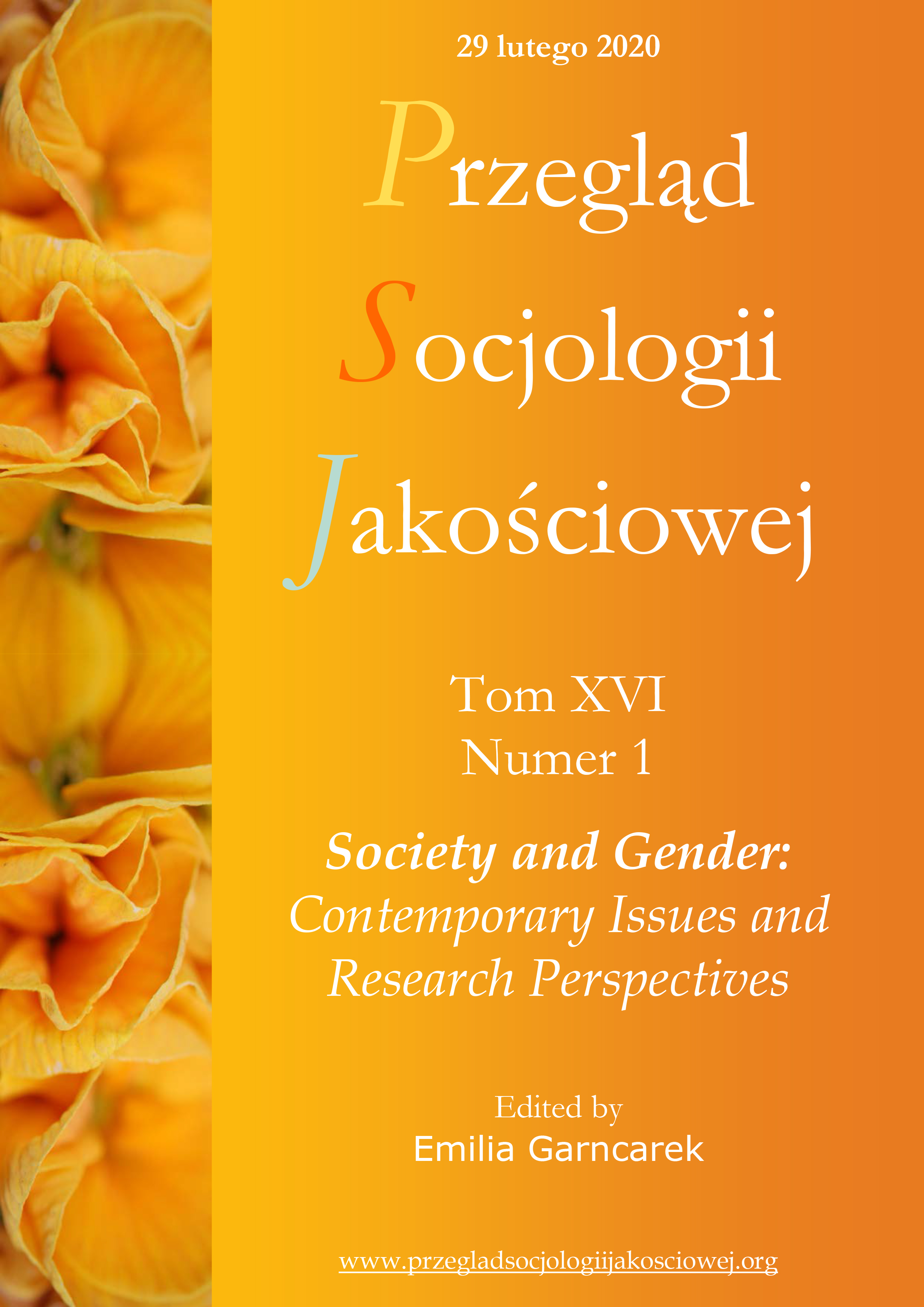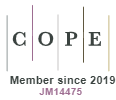Przemoc wobec kobiet w serialu telewizyjnym "Druga szansa"
DOI:
https://doi.org/10.18778/1733-8069.16.1.03Słowa kluczowe:
przemoc, kobiety, telewizja, „Druga szansa”, molestowanie seksualne, ofiara, sprawcaAbstrakt
Celem artykułu jest krytyczna refleksja nad współczesnymi polskim serialami telewizyjnymi, a w szczególności nad sposobami reprezentacji różnych przejawów przemocy wobec kobiet. Analizowanym w tekście serialem jest produkcja TVN Druga szansa, którą emitowano w latach 2016−2018. Badania medioznawcze wskazują na to, że media niezmiennie ukazują przemoc wobec kobiet, jej okoliczności i powody, jak również wizerunki ofiar i sprawców w stereotypowy, często sensacyjny, sposób. Autorka patrzy na przemoc wobec kobiet w wybranym serialu przez pryzmat ruchu społecznego #MeToo, a także w kontekście debaty na temat „ideologii gender” w Polsce. Wnioski z analizy serialu wskazują na to, że przemoc wobec kobiet jest w nim potraktowana jako poważny problem społeczny i że ma on potencjał, aby uwrażliwić publiczność na tę kwestię przedstawiając ją w sposób niestereotypowy, kompleksowy i zniuansowany. Jednocześnie produkcja TVN nie uwzględnia w wystarczającym stopniu społeczno-kulturowych uwarunkowań przemocy wobec kobiet, których należy szukać w patriarchalnej strukturze społecznej i braku równouprawnienia kobiet i mężczyzn.
Pobrania
Bibliografia
Anderson, Irina and Kathy Doherty. 2008. Accounting for Rape. Psychology, Feminism and Discourse Analysis in the Study of Sexual Violence. New York: Routledge.
Google Scholar
DOI: https://doi.org/10.4324/9780203087541
Cardwell, Sarah. 2007. “Is Quality Television Any Good? Generic Distinctions, Evaluations and the Troubling Matter of Critical Judgement.” Pp. 19-34 in Quality TV. Contemporary American Television and Beyond, edited by J. McCabe and K. Akass. New York: I.B. Tauris.
Google Scholar
DOI: https://doi.org/10.5040/9780755696376.ch-001
“Druga szansa hitem TVN i Player.pl. Powstanie drugi sezon.” 2016. Retrieved January 20, 2020 https://www.wirtualnemedia.pl/artykul/druga-szansa-hitem-tvn-i-player-pl-powstaniedrugi-sezon
Google Scholar
Druga szansa, dir. Michał Gazda, Łukasz Kośmicki, 2016-2018, TVN.
Google Scholar
Feuer, Jane. 1984. “The MTM Style.” Pp. 32-60 in MTM: Quality Television, edited by J. Feuer, P. Kerr, and T. Vahimagi. London: BFI Publishing.
Google Scholar
Graff, Agnieszka and Elżbieta Korolczuk. 2017. “‘Worse than Communism and Nazism Put Together’: War on Gender in Poland.” Pp. 175-193 in Anti-Gender Campaigns in Europe: Mobilizing against Equality, edited by D. Paternotte and R. Kuhar. London, New York: Rowman & Littlefield International.
Google Scholar
Grzebalska, Weronika. 2015. “Poland.” Pp. 83-103 in Gender as Symbolic Glue. The Position and Role of Conservative and Far Right Parties in the Anti-gender Mobilizations in Europe, edited by E. Kováts and M. Pőim. Budapest:Foundation for European Progressive Studies (FEPS).
Google Scholar
Hanmer, Jalna. 1996. “Women and Violence: Commonalities and Diversities.” Pp. 7-21 in Violence and Gender Relations. Theories and Interventions, edited by B. Fawcett et al. London: SAGE.
Google Scholar
Hearn, Jeff. 1996. “Men’s Violence to Known Women: Historical, Everyday and Theoretical Constructions by Men.” Pp. 22-37 in Violence and Gender Relations. Theories and Interventions, edited by B. Fawcett et al. London: SAGE.
Google Scholar
Hess, Amanda. 2017. “How Movies and TV Address Rape and Revenge.” New York Times. Retrieved October 08, 2018 https://www.nytimes.com/2017/01/12/arts/television/how-moviesand-tv-address-rape-and-revenge.html
Google Scholar
Hughes, Sarah. 2014. “Rape on TV: A Justified Look at Violence Against Women or a Crude Plot Device?” The Guardian. Retrieved October 08, 2018 https://www.theguardian.com/tvand-radio/2014/dec/13/tv-rape-portrayal-storm
Google Scholar
Kilmartin, Christopher and Julie Allison. 2007. Men’s Violence against Women. Theory, Research, and Activism. London: Lawrence Erlbaum Associate Publishers.
Google Scholar
DOI: https://doi.org/10.4324/9780203937136
Kilmartin, Christopher and Alan D. Berkowitz. 2005. Sexual Assault in Context. Mahwah, New Jersey: Lawrence Erlbaum Associates.
Google Scholar
Konecki, Krzysztof T. 2011. “Visual Grounded Theory: A Methodological Outline and Examples from Empirical Work.” Revija za sociologiju 41(2):131-160.
Google Scholar
DOI: https://doi.org/10.5613/rzs.41.2.1
Koss, Mary P. and Hobart H. Cleveland. 1997. “Stepping on Toes. Social Roots of Date Rape Lead to Intractability and Politization.” Pp. 4-21 in Researching Sexual Violence Against Women. Methodological and Personal Perspectives, edited by M. D. Schwartz. London: SAGE.
Google Scholar
DOI: https://doi.org/10.4135/9781483327907.n1
Kováts, Eszter and Maari Pőim. 2015. Gender as Symbolic Glue. The Position and Role of Conservative and Far Right Parties in the Anti-gender Mobilizations in Europe. Budapest: Foundation for European Progressive Studies (FEPS).
Google Scholar
Łaciak, Beata. 2013. Kwestie społeczne w polskich serialach obyczajowych – Prezentacje i odbiór. Analiza socjologiczna. Warsaw: Wydawnictwo Akademickie ŻAK.
Google Scholar
“Małgorzata Kożuchowska: wątek #MeToo w Drugiej szansie będzie głosem w dyskusji w bardzo trudnej sprawie. Chcemy pokazać różne oblicza kobiet i mężczyzn.” 2018. Retrieved January 20, 2020 https://www.wirtualnemedia.pl/artykul/malgorzata-kozuchowska-watek-metoo-druga-szansa-sezon-5
Google Scholar
Orr, Christopher. 2015. “Why Does Game of Thrones Feature So Much Sexual Violence? The Atlantic.” Retrieved October 08, 2018 https://www.theatlantic.com/entertainment/archive/2015/06/game-of-thrones-sexual-violence/396191/
Google Scholar
“Ostatni sezon Drugiej szansy stracił 280 tys. widzów.” 2018. Retrieved January 20, 2020 https://www.wirtualnemedia.pl/artykul/koniec-serialu-druga-szansa-ogladalnosc-piaty-sezon
Google Scholar
Paniagua, José María Bernardo et al. 2007. “New Advances in Critical Discourse Analysis of Media Texts.” Pp. 5-16 in Critical Discourse Analysis of Media Texts, edited by J. M. B. Paniagua et al. Aldaia: Universitat de València Press.
Google Scholar
Paternotte, David and Roman Kuhar (2017). Anti-Gender Campaigns in Europe: Mobilizing against Equality. London, New York: Rowman & Littlefield International
Google Scholar
Qianbo, LI. 2016. “Theoretical Framework of Critical Discourse Analysis.” Studies in Literature and Language 13(5):36-40.
Google Scholar
Różalska, Aleksandra M. 2011. “Gender and Family Discourses in Polish Television Series in the Context of Catholic and National Values.” Pp. 59-77 in Gender and Diversity: Representing Difference, edited by D. Golańska and A. M. Różalska. Lodz: Łódź University Press.
Google Scholar
Rustad, Gry C. 2015. Mapping Scandinavian “Quality TV.” Nordmedia Høgskolen i Hedmark. Retrieved February 10, 2020 https://www.academia.edu/14199152/Mapping_Scandinavian_quality_TV
Google Scholar
Schwartz, Martin D. 1997. “Preface.” Pp. ix-xvii in Researching Sexual Violence Against Women. Methodological and Personal Perspectives, edited by M. D. Schwartz. London: SAGE.
Google Scholar
DOI: https://doi.org/10.4135/9781483327907
Seiter Ellen and Mary Jeanne Wilson. 2005. “Soap Opera Survival Tactics.” Pp. 136-155 in Thinking Outside the Box. A Contemporary Television Genre Reder, edited by G. E. Edgerton and B. G. Rose. Lexington: University of Kentucky Press.
Google Scholar
Sutherland, Georgina et al. 2015. “Media Representations of Violence Against Women and Their Children: State of Knowledge Paper” ANROWS Landscapes 15/2015. Sydney, NSW: ANROWS.
Google Scholar
DOI: https://doi.org/10.1007/978-1-4939-2266-6_2
Sutherland, Georgina et al. 2016. “Media Representations of Violence against Women and Their Children: Final Report.” Retrieved October 04, 2018 https://www.anrows.org.au/publication/media-representations-of-violence-against-women-and-their-children-final-report/
Google Scholar
Talarczyk, Monika. 2013. “Uważaj na swoją dziewczynkę!” Dwutygodnik. Tygodnik Kultury 8. Retrieved January 31, 2019 https://www.dwutygodnik.com/artykul/4677-uwazaj-na-swoja-dziewczynke.html
Google Scholar
van Dijk, Teun A. 1993. “Principles of Critical Discourse Analysis.” Discourse & Society 4(2):249-283.
Google Scholar
DOI: https://doi.org/10.1177/0957926593004002006
van Dijk, Teun A. 1995. “Aims of Critical Discourse Analysis.” Japanese Discourse 1:17-27.
Google Scholar
Wodak, Ruth. 2013. “Critical Discourse Analysis: Challenges and Perspectives.” Pp. xix-xliii in Critical Discourse Analysis. Volume 1, edited by R. Wodak. Los Angeles, London: SAGE
Google Scholar
DOI: https://doi.org/10.4135/9781446286289
Pobrania
Opublikowane
Jak cytować
Numer
Dział
Licencja

Utwór dostępny jest na licencji Creative Commons Uznanie autorstwa – Użycie niekomercyjne – Bez utworów zależnych 4.0 Międzynarodowe.














